- Home
- Lin Carter
The Nemesis of Evil
The Nemesis of Evil Read online
Table of Contents
NOTE:
Chapter 1 — The Hand of Death
Chapter 2 — Invisible Flames
Chapter 3 — The Omega Men
Chapter 4 — The Secret Brotherhood
Chapter 5 — The Hidden Camera
Chapter 6 — The Hooded Men
Chapter 7 — When Dead Men Walk
Chapter 8 — The Fight in the Shack
Chapter 9 — Lucifer Strikes!
Chapter 10 — Sinestro
Chapter 11 — The Death Secret
Chapter 12 — The Battle on the Rooftop
Chapter 13 — “N-S-D-M-T”
Chapter 14 — An Hour to Live
Chapter 15 — The Code Message
Chapter 16 — The Death No Man Can See
Chapter 17 — Mystery Mountain
Chapter 18 — The Traitor Unmasked
Chapter 19 — Back from the Dead!
Chapter 20 — The Stone Spear
Chapter 21 — Flaming Doom
Chapter 22 — The Case is Closed
Chapter 23 — The Man from Tomorrow
This is a work of fiction. All of the characters, organizations, and events portrayed in this novel are either products of the author’s imagination or are used fictitiously.
THE NEMESIS OF EVIL
Copyright © 1976 by Lin Carter.
Published by agreement with Wildside Press LLC and John Gregory Betancourt.
All rights reserved.
Edited by Dan Thompson
A Thunderchild eBook
Published by Thunderchild Publishing. Find us at https://ourworlds.net/thunderchild_cms/
First Edition: 1976
First Thunderchild eBook Edition: August 2017
NOTE:
After three years of trying off and on through an old high school friend now in the U. S. House of Representatives, and a college buddy now serving in the Department of Justice, I have finally succeeded in obtaining the permission of the Omega organization to write up in book form several of the most outstanding cases in which that little-known crime-fighting group crossed blades with super-criminals.
This book and those that will follow have, frankly, been heavily fictionalized. That is, I have invented dialog and the descriptions, from the expressions on the faces- of the characters to their hair color. But, to a surprising degree, everything else in this book and its sequels is exact, literal truth.
It is fact, not fiction, despite the official “category” into which my publishers will place these books in their catalogs.
I have re-created the events that follow through the medium of exhaustive tape-recorded interviews with the Omega men themselves. By cross-referral of the memories of the men who participated in these events, I have arrived at what seems to me a vivid, detailed, highly accurate synthesis of the actual event. But I have not scrupled to invent where memory fails and where invention serves the crispness and immediate impact of each scene, remembering the novelist’s tenet: Make it seem real.
One thing more. Without exception, every single name in this book is fictitious. Not only the names of every character, but also the names of places and institutions. There is no newspaper called the Illustrated Press in Los Angeles. If there has ever existed, or exists now, anywhere in the world, a cult or mystical order named “the Brotherhood of Lemurian Wisdom,” I am innocent of any knowledge of the fact, and tender them my apologies in advance.
There is no country in Europe called Novenia, no suburb of Palma Laguna known as Seagrove, and, as I’m sure my reader knows, no city or town on the Eastern Seaboard called Knickerbocker City. Prince Zarkon’s true name is not “Prince Zarkon,” and the real Omega organization is not known as “the Omega organization.”
The reason behind my substitution of invented names for those of the actual individuals and institutions involved in the story is quite a simple one. The amazing man whom I have chosen to call “Prince Zarkon” insisted on the practice, as a condition of granting the series of lengthy interviews I requested. His reasons for asking this seem obvious to me: to protect the names and reputations of all persons involved in the story and to ensure the continuing operations of himself and his lieutenants. The less that is known about them and their organization, the less vulnerable they are to their enemies. (And, incidentally, let me say, here and now, that the account of Prince Zarkon’s secret origin as given in Chapter 23 is completely fictitious; I felt something of the sort was required in order to motivate this character, to explain logically his reason for adopting so extraordinary a career. His real reason is not known to me.)
I have gone to these lengths, all this trouble, because I am a trifle bored with writing sensational fiction. Impressed by true crime documentaries such as Truman Capote’s In Cold Blood, I felt inspired to try my hand at the “non-fiction novel,” an exciting new story form which Capote more or less invented. The result is in your hands, and if, perchance, it reads more like a novel-novel than a non-fiction novel, the credit rests with the sequence of events rather than with my skill or artistry in reporting them.
Readers who know my own fiction, and thus know me fairly well, will understand why I felt drawn to this kind of a narrative rather than to the sort of story which appealed to Mr. Capote. I like to write crisp, vivid, exciting stories filled with color and action, and I like to read that sort of thing, too. Hence I felt instinctively attracted to the cases of Omega, because that’s the sort of adventures they have.
This is, by the way, the case reported in File 12 of Omega, the twelfth case upon which Zarkon and his organization embarked. The events took place in early August 1970. You will search the newspapers of that month in vain for anything remotely resembling the narrative I have written here: For reasons that will become obvious as you read the story, most of it was officially unreported. But those who seek will find. And the unexplained death of an unidentified man wearing red robes found at the base of Mount Shasta, the surprise arrest of several criminals on the FBI’s “most wanted” list, and a few other events on the periphery of this story can actually be found in the .public press of the time, however inadequately explained. Look ‘em up for yourself, if you don’t believe me.
I do not myself know the actual name or real identity of the brilliant but deranged scientific criminal called “Lucifer” in these pages. But that name, as well as “Zandor Sinestro,” are my inventions.
Since the Omega organization goes, and has ever gone, to extraordinary lengths to conceal the very fact of its existence, and has continually discouraged publicity rather than seeking it, some account of how I first heard of Omega and first got on its trail seems called for. I am no sleuth, no investigative reporter, like the ill-fated MacAndrews of File 12, but by an odd quirk of fate I became involved in one of Omega’s cases a few years ago while returning from an overlong visit to Cambodia with my wife.
My role in that adventure was certainly a minor one (I am no man of action, only a writer), so I will say- nothing about it here; besides, the Justice Department has asked me not to discuss that particular sequence of events. Anyway, the upshot of the whole crazy thing was that Prince Zarkon or the man I have chosen, rather melodramatically, to call Prince Zarkon — was in my debt to the extent of one personal favor. It has taken me three years of steady plugging away, pulling every string within my reach to pull, to persuade this amazing individual to repay me in this manner: by opening some of the less-sensitive files of Omega and by granting me interviews.
He has trusted me to be faithful to my promise to reveal or let slip nothing that might enable the curious reader to trace him to his lair. I sincerely believe that I have not betrayed that trust.
— LIN CARTER
Hollis, Long Isla
nd, New York
Chapter 1 — The Hand of Death
The slopes of Mount Shasta were drenched in purple shadows, but already the first few level shafts of dawn were striking the mountain’s peak with rose-and-golden fire.
The scene was a spectacular one from the ledge on the upper slope. The vista that fell away to every side was one of wild and rugged grandeur. But to the small group of five men who huddled together where the ledge widened out, their minds were on subjects other than the beauties of nature.
For the most part they waited in silence. When they did speak among themselves or address each other, it was to exchange only a few terse words, and these in a low mutter.
They were curiously dressed, the five men who waited on the mountain. Each of them was robed in a voluminous, wide-sleeved robe the precise scarlet of human blood. To these robes hooded cowls were attached, and these were drawn up as if to conceal their faces.
What little could be glimpsed of the features of the five red-robed men conveyed the impression of tension, excitement, and even apprehension. But it was hard to make out anything more, so closely were their hoods drawn, enshadowing their features. The fifth man regretted that, for reasons of his own, which will become apparent before long. He was younger than the rest, his face tanned, healthy, alert, candid. The other men with him on the mountain were sallow, hard-bitten, with furtive eyes and twisted, cynical mouths.
From time to time, one of. the five men would move uneasily, shuffle his feet, clear his throat, or cough. This waiting was beginning to get on their nerves: it always did; perhaps that is why they had been commanded to arrive early.
By now it was truly dawn.
The five men in the blood-colored robes grew tenser. No longer did they shift their weight uneasily from one foot to the other, exchange a low mutter with a comrade, or cough. They stared with a peculiar intensity at a spot on the path above them as if, for some reason, that innocent stretch of naked stone fascinated them. Beyond it, the ledge rose to curve around the wall of the mountain and vanish from sight.
As yet, the upper ledge was empty; soon it would be occupied, they knew.
They were awaiting the coming of a man, their leader, their Master. If, that is, he was in truth only a man. They worshiped yet feared him. Before he had come into their lives they had, most of them, been small-time criminals after an easy buck. Then he had come to open up vast, glittering, imperial vistas before them, to promise them power undreamed of, and strange wisdom beyond the knowledge of the sages. But he exacted a fearful price for those gifts of power and wisdom. There was only one penalty for disloyalty or failure or betrayal. That penalty was ... death.
Death that struck suddenly and silently, and passed on, leaving no mark upon its victim and no sign of its passage.
There could be no hope of committing any of these sins against the Master; for the ancient wisdom of the Lemurians had bequeathed unto him the uncanny ability to read the minds of others. Or so, at least, he claimed.
The suspense became almost unendurable.
They had been instructed to gather in this weird and awful place of naked stone and windswept heights in the hour before dawn. And now, at any moment, the Master should appear among them — suddenly, without warning, from some secret place they could never ascertain.
The time was — now.
Suddenly the golden rays of the morning sun struck about them, driving back the shadows and blinding them momentarily with its bright dazzle. When their vision cleared, they were no longer five in number, for the Master stood before them on the ledge of rock that curved away around the side of the mountain, going nowhere.
An involuntary gasp broke from their lips, and as one man they rose to their feet to give homage to the great sage whose mighty brain contained the innermost secrets of lost and legended Lemuria. He was a tall man, and powerfully built, with a deep chest, long arms and legs, and his heavily muscled, virile torso was wrapped from head to foot in a loose robe that was flame-crimson. He stood without moving, and it was as if he had melted into being from out of thin air and onto the ledge.
In a deep voice of resonant timbre he named them one by one, and in response each of the five disciples lifted his right arm in salute.
“Brother Nergal, Brother Beelzebub, Brother Loki, Brother Pluto, Brother Ahriman,” he said, nodding in reply to the salute of each lifted arm.
It was the whim of the Master to bestow upon each of his chief lieutenants the name of one of the gods of death and darkness and the underworld, drawn from the world’s chief mythologies. No one knew why, nor dared to ask.
The man he had addressed as Brother Ahriman was the last to be named because he was the most recent member of their ranks, having been recruited by Brother Nergal only months before. When Brother Ahriman raised his right arm to salute the Master he held it aloft just a moment or two longer than might seem necessary. If the Master noticed this, he said nothing about it, and not the slightest flicker of expression crossed his powerful features to suggest that he thought anything of it.
It would take ears far more sensitive than those possessed by any human to have heard the faint clicks as the miniature camera strapped to the underside of Brother Ahriman’s right arm recorded the face of the Master on supersensitive film.
With a stately gesture, the Master bade his five red-clothed underlings seat themselves. They sank to their knees while he remained standing, towering above them.
“I observe that Brother Shaitan and Brother Dis are not with us this morning,” said the Master in a deep, resonant voice.
The senior member of the group — whose true name was often a matter of discussion when FBI bureau chiefs got together for shop talk, and whose sallow, unhealthy, vicious-eyed features were exhibited prominently on the bulletin boards of post offices around the country — cleared his throat timidly and made reply.
“No, Master,” he said. “Brother Shaitan is occupied with a mission of whose nature I believe you have been privately informed by him.”
The Master nodded grimly, saying nothing.
“And Brother Dis is in Las Vegas recruiting a number of men to make up Group 3,” he concluded.
“Very well, then,” said the Master. “I believe we are ready to begin.”
His stance was regal, the proud lift of his bullet head imperial, as he loomed above them there on the high part of the ledge, silhouetted against the rugged and impressive grandeur of the mountain range, the wind-torn clouds of the sky behind the mountains, and the brilliance and glory of the sunrise that lit up the world.
The ceremony, which Ahriman had observed twice before, was ready to begin.
“Na kadish iom-thaa kadishtu,” he intoned in ritual blessing. The language was supposedly in the lost tongue of the Lemurians, but Brother Ahriman, at least, had his doubts. Privately, he considered it to be mere gibberish.
One by one the disciples were commanded to report on the activities over which they had charge. The catalog of felonies thus reported would have delighted the heart of the district attorney of Los Angeles County, had he been fortunate enough to have been present. Rich men dying of incurable ailments and superstitious millionaires’ widows with a penchant for the occult had been approached on behalf of the Brotherhood and had been promised miracle cures and fantastic secrets in return for substantial donations. A police agent on the bunco squad, who had penetrated one of their meetings, had met with a fatal accident, as had two newspaper reporters before him. The managing editor of a powerful Los Angeles newspaper, about to launch an anticultist crusade against several occult groups in general and the Brotherhood of Lemurian Wisdom in particular, had received a certain “warning” and had abruptly changed his plans.
To all of these -things, Brother Ahriman listened intently.
He was the last to whom the Master turned for his report. His report was brief and succinct, his activities as yet being merely nominal — a simple matter of monitoring the many occult newsletters and underground magazi
nes for any reference to the activities of the Brotherhood. Two of these publications in particular, he said, were loudly voicing their suspicions as to the validity of the claims of the Brotherhood. These publications were The Rowan Tree, a bimonthly magazine reproduced by photo-offset, edited and published by one Homer T. Breedlove of the small community of Jackson Center, and the Borderlands Report, a mimeographed newsletter edited and published by a young woman who lived in Palma Laguna and whose name was Elvira Higgins.
Brother Ahriman had met both of these individuals in an attempt to persuade them to subdue or suspend their criticisms of the Brotherhood. Homer T. Breedlove, a nervous rabbity little man, had proved easily intimidated, and henceforth the Brotherhood could expect at most a lukewarm press in his publication. But as for Elvira Higgins, the girl had demonstrated that she was made of sterner stuff. Not only had she refused to be cowed by thinly veiled threats of reprisals and sanctions, but, he reported, stifling a grin, the obstinate young lady had driven him out of her apartment at the point of a gun.
And not a pearl-handled “ladies’ special” either, Brother Ahriman reported, but an old-fashioned horse pistol, a six-shooter such as had tamed the West in the hands of stalwarts like Wyatt Earp and Doc Holliday. This piece of portable artillery, Elvira Higgins had stoutly and significantly pointed out, had belonged to her grandfather, a deputy sheriff in Comanche County. “More than one big-talking desperado had been laid low by Grandpappy’s hoss pistol,” she had informed him ominously. Looking at the huge weapon, Ahriman had believed her.
Completing his report, Brother Ahriman remained standing while the Master commended him.
“It is admirable that one as yet a neophyte to our ranks should prove so scrupulous in his duties!” the Master said, smiling slightly. And with those words he extended one hand in benediction, permitting his outstretched fingers to touch for just a moment the bowed head of the newest disciple. A murmur of approval ran around the circle.

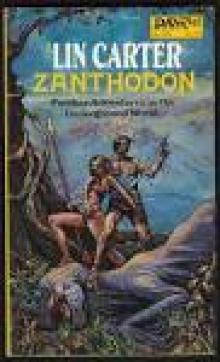 Zanthodon
Zanthodon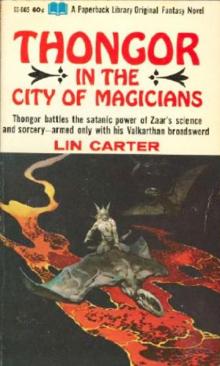 Thongor in the City of Magicians
Thongor in the City of Magicians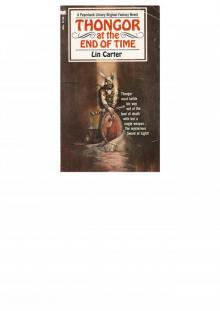 Thongor at the End of Time
Thongor at the End of Time The Valley Where Time Stood Still
The Valley Where Time Stood Still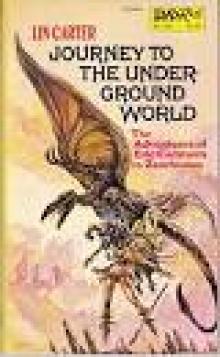 Journey To The Underground World
Journey To The Underground World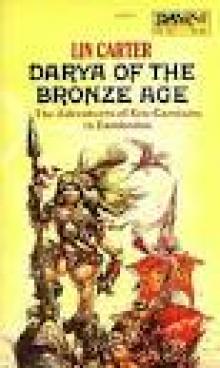 Darya of The Bronze Age
Darya of The Bronze Age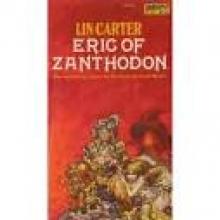 Eric of Zanthodon
Eric of Zanthodon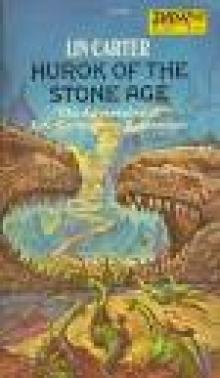 Hurok Of The Stone Age
Hurok Of The Stone Age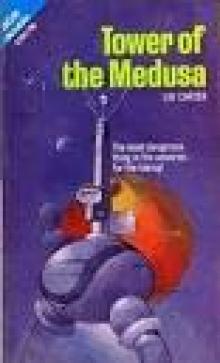 Tower Of The Medusa
Tower Of The Medusa Thongor Fights the Pirates of Tarakus
Thongor Fights the Pirates of Tarakus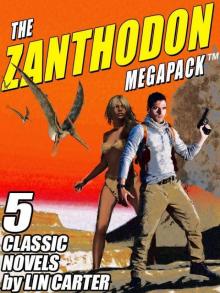 The Zanthodon MEGAPACK ™: The Complete 5-Book Series
The Zanthodon MEGAPACK ™: The Complete 5-Book Series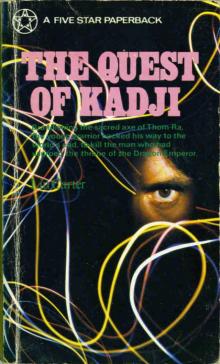 The Quest of Kadji
The Quest of Kadji Lin Carter - The Man Who Loved Mars
Lin Carter - The Man Who Loved Mars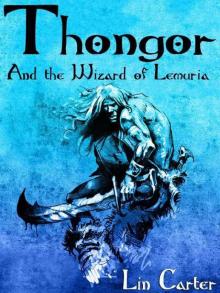 Thongor and the Wizard of Lemuria
Thongor and the Wizard of Lemuria The Nemesis of Evil
The Nemesis of Evil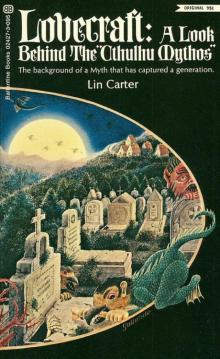 H.P.Lovecraft: A Look Behind Cthulhu Mythos
H.P.Lovecraft: A Look Behind Cthulhu Mythos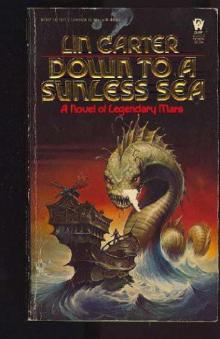 Lin Carter - Down to a Sunless Sea
Lin Carter - Down to a Sunless Sea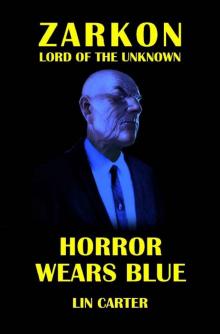 Horror Wears Blue
Horror Wears Blue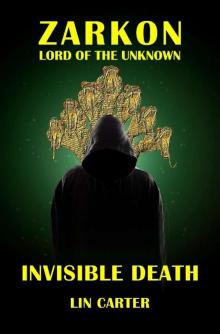 Invisible Death
Invisible Death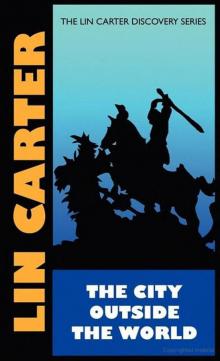 Lin Carter - The City Outside the World
Lin Carter - The City Outside the World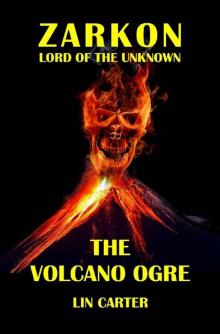 The Volcano Ogre
The Volcano Ogre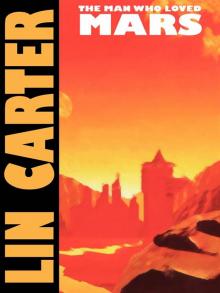 The Man Who Loved Mars
The Man Who Loved Mars